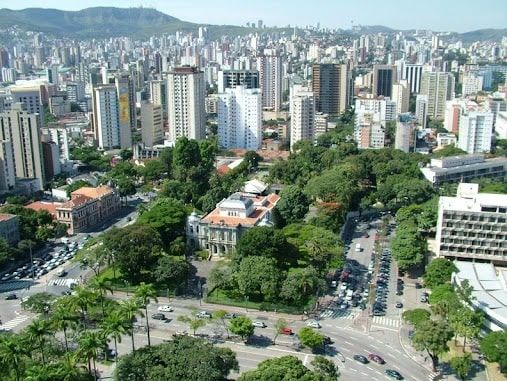Travel guide: Belo Horizonte, a 20th-century city open to the world
Upon arrival in Belo Horizonte, the visitor will be pleasantly immersed in the motion of this city with more than two million inhabitants.

Belo Horizonte is one of the cities that are part of the UNESCO World Heritage for being the Brazilian capital with the highest quality of life. It is considered the gateway to visit colonial cities and the capital of the state of Minas Gerais. Upon arrival in Belo Horizonte, the visitor will be pleasantly immersed in the activity of a city with more than two million inhabitants. With a mild climate all year round, it is known worldwide for its hectic nightlife and hospitality.
Pampulha, delicate sophistication
There are several attractions in Beagá (so affectionately called by its inhabitants), among which the enormous Laguna de la Pampulha stands out, where apart from the immense architectural complex designed by Oscar Niemeyer, there is an interesting Zoological Garden. Next, to the Sierra del Curral, the visitor will come across the Plaza del Papa, one of the most sought-after points of view of the city.
Built at the time of the founding of the city, the Plaza de la Libertad housed the seat of power of Minas Gerais. Walking through the gardens, inspired by the Palace of Versailles, is a healthy habit of the mineiros. The Cultural Circuit of Liberty Square has an old public administration building that became cultural and entertainment spaces, among them the Banco do Brasil Cultural Center, which has been part of this group since 2013 and has an intense cultural program.
The Central Market, marvelously seductive
One thing that will leave its mark on tourists is the Central Market, where more than 400 stalls sell everything from exotic foods, typical products, or handicrafts.
Inaugurated in 1929, it is considered one of the best markets in the world, being one of the most visited commercial points in the capital. It receives day diverse visitors from all parts of Brazil and abroad in search of shopping and fun. More than 400 stores sell an enormous variety of products, including typical sweets, regional handicrafts, religious articles, and condiments.
Sprinkled by countless bars and restaurants that give even more life to the place, it is a tradition to have lunch on Saturday mornings a feijoada that, according to the mineiros, is the best in Brazil. The Central Market offers guided tours by bilingual guides from Monday to Saturday, from 9 am to 5 pm, and on Sundays and holidays, from 9 am to 1 pm.

Near Bello Horizonte
Diamondine, the heritage of three centuries ago
Diamantina, from the top of its 300 years, has a rich and well-preserved architectural, cultural, and natural heritage. Its origin, in the first half of the 18th century, is related to the exploitation of gold and diamond. The name Diamantina is a reference to the enormous amount of diamonds extracted in the region. In 1999, Diamantina received from UNESCO the title of Cultural Heritage of Humanity.
One of the most picturesque buildings of the city is the Passadiço da Casa da Glória, in the historical center. The building connects, through a wooden corridor, two historic houses where a strict school for girls used to operate. The passageway was used for them to move around the institution without having contact with the people of the city.
Must-see walks around Diamantina include the villages of Milho Verde (on the Camino Real) and the Parque Estadual do Biribiri, with cave paintings and beautiful waterfalls. The Metropolitan Cathedral of Santo Antônio da Sé, famous for its baroque side altars, is another Diamantina attraction.
Inhotim Institute, the cradle of contemporary art
Organized in the 110 hectares of visit in more than 20 galleries, surrounded by immense gardens and trails, is in the city of Brumadinho. Many galleries have interactive works, which allow for contact with the exhibits, making the experience even more unique. Inhotim also has a collection of 4,200 rare plants from various continents. Among the artists exhibited there are creators from all over the world, such as Cildo Meireles, Adriana Varejão, Doug Aitken, Chris Burden, or Cristina Iglesias.




